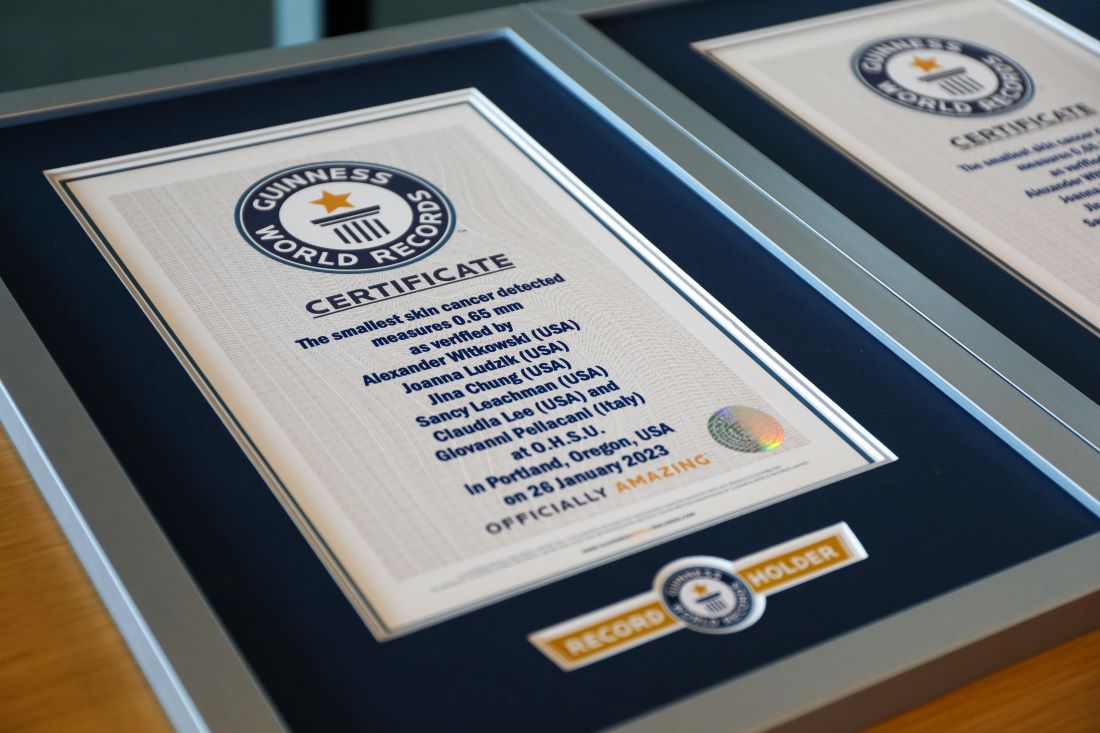A skin cancer that was almost invisible to the human eye has been successfully detected, a feat that has seen the medical team recognized with a Guinness World Record. More importantly, for patient Christy Staats, it means her cancer was caught at an early stage before it had a chance to spread.
“I believe it is possible for everyone to be as lucky as me with the right technology,” said Staats in a statement. “If they can find mine when it’s so early, it is a no-brainer that this technology can help other people.”
Dermatologist Dr Alexander Witkowski, an assistant professor at the Oregon Health & Science University (OHSU) School of Medicine, used a combination of techniques to examine the skin lesion. Dermoscopy involves a handheld device called a dermatoscope, which works like a magnifying glass to give clinicians a closer look at the affected skin. Dr Witkowski combined this with reflectance confocal microscopy, a precision, noninvasive imaging method, to make the diagnosis of micro-melanoma in situ.
A team of physicians and scientists confirmed the diagnosis after a biopsy using staining and molecular testing, as described in a recent case report.
“What our team accomplished together embodies my personal mission statement: ‘Catch the inevitable, early,’” said Dr Witkowski.
Staats had originally made the appointment to discuss another skin growth that she was concerned about, which turned out to be benign. However, when examining her, Dr Witkowski noticed a tiny spot on her right cheek that could very easily have been missed. It measured just 0.65 millimeters (0.025 inches) but had some features that rang alarm bells.
“I took a picture of the spot […] then performed additional imaging with reflectance confocal microscopy (virtual biopsy) which showed atypical cells concerning for melanoma,” Dr Witkowski explained. “I told Christy right there at the bedside, ‘I think this could be the smallest skin cancer ever detected.’”
It was fortunate for Staats that this type of confocal microscopy was available: OHSU is the only center on the West Coast of the United States to have one of these devices. As director of the OHSU Knight Cancer Institute’s Melanoma Program and chair of the Department of Dermatology Dr Sancy Leachman put it, this case “truly demonstrates the power of new technology to identify potentially dangerous spots early.”
With the diagnosis confirmed, and following the publication of the peer-reviewed case report, the team was officially recognized by Guinness World Records in a ceremony to celebrate the “Smallest Detected Skin Cancer.”

It’s official. Image credit: OHSU/Christine Torres Hicks
Melanomas, like this cancer, account for only around 1 percent of overall skin cancers, but cause a disproportionate number of deaths. The American Cancer Society estimates that 97,610 new melanoma cases will be diagnosed in 2023, and catching them as early as possible is vital to give patients the very best chance.
“This was a team effort – we used skin imaging and technology to improve the early diagnosis of melanoma,” said Dr Leachman. “It took everyone on the team – dermatologists, dermatopathologists, and dermatologic surgeons. It’s an incredible thing when you have an entire team able to work together to help patients.”
The study is published in Dermatology Practical & Conceptual.
Source Link: World’s Smallest Skin Cancer Detected At Just 0.65 Millimeters